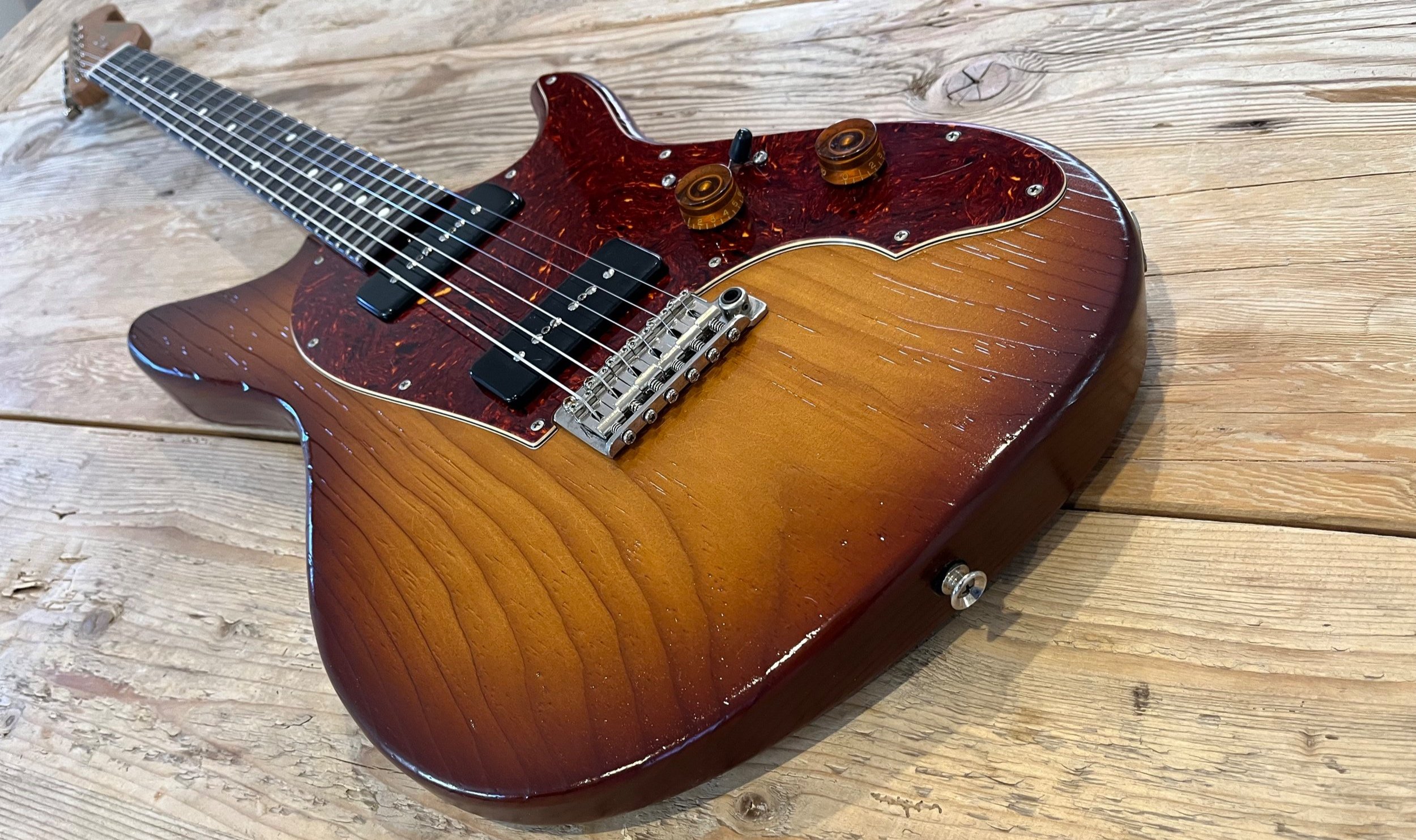
Roasted Pine Series guitars featuring our exclusive TimeWorn finish!
Introducing the new DeltaJet model!
Available now! Taking custom orders!
Roasted Pine Series | DeltaJet | TimeWorn Finish
-

NEW! Roasted Pine Series Guitars!
Available in our NOS Retro, NOS Retro T and new DeltaJet models: Featuring one piece Roasted Pine bodies, Roasted 4A Flamed Maple necks with our new TimeWorn Finish options. These guitars are lightweight but with tone for days! All that Grosh goodness you know and love in a new look and feel! We are excited for you to experience these for yourself!
“How do the Roasted Pine guitars sound?” Here are Don’s Comments:
“After spending a bunch of time with these first guitars, I’m finding the Roasted Pine has a wide range of tone. It is super responsive and expressive to your right hand pick attack and dynamics. These all have a bunch of sustain as well, which I was surprised about, being they are light weight.”
-

NEW! DeltaJet Models!
Based on our highly successful ElectraJet model, an original offset guitar design that set the guitar world ablaze, The DeltaJet is an evolutionary step. Same body shape as the EJ but with a neck inspired by our successful NOS Retro models. Lighter one way vintage style truss rod, Larger “NOS” headstock shape, an all new pickguard design and only available in our Roasted Pine Series!
• New pickguard design.
• Neck construction, Vintage single truss rod like the our NOS guitars. ElectraJet has our double welded truss rod design.
• Larger NOS Headstock, instead of our smaller EJ/RC headstock. -

NEW! TimeWorn Finish!
Don wanted to offer a finish option that has that friendly “broken in” feel and vibe of a great vintage guitar but in a more aesthetically pleasing way than the typical “forced chip out” vibe. Available on every model we build, not just the amazing Roasted Pine guitars! Done with Old formulated Nitro Lacquer, Ultra thin finishes with natural lacquer checking (No cutting the lacquer to make it look checked), aged nickel hardware and three levels of neck finish options. 2 Levels of neck aging. Level #1 is our normal Aged Satin Lacquer finish, or gloss. Level #2 Lacquer checked neck, No-Rub through on back shape, satin or gloss. Level #3 Lacquer checked neck with Rub- Through on back shape and an oil finish applied, satin only.

















